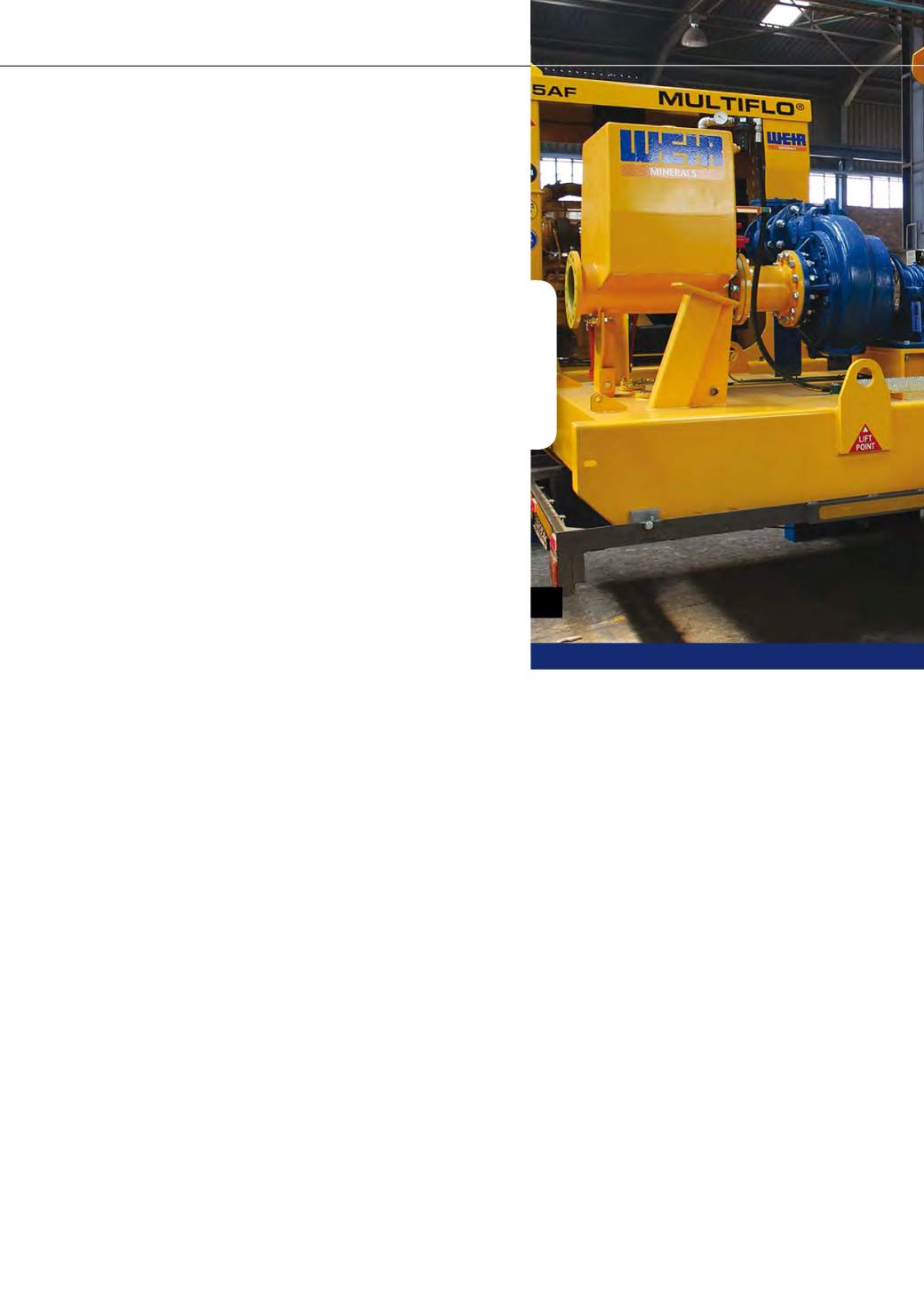

Chemical Technology • April 2015
4
Dewatering pontoons decrease costs
and improve efficiencies
A
s mines seek ways of improving efficiencies, whilst
simultaneously reducing operational costs, there is
an increased focus on the streamlining of dewater-
ing operations. Dewatering of open pits and slimes dams
often poses a challenge in terms of the choice between
undertaking civil construction for pump stations or select-
ing a mobile pontoon or skid-mounted pumping solutions.
Howard Jones, Weir Minerals Africa’s Product Manager –
Dewatering Africa and Middle East, emphasises that while
each application requires a customised approach, the land-
based pump station does not always have the same flexibility
that pontoon or skid-mounted pump sets would offer. “Con-
ventional dewatering solutions are less effective and require
expensive civil works, whereas pontoons are installed at the
source making pumping more efficient as the pumps face
consistent site and suction conditions.”
Another major advantage of pontoon or skid-mounted
pumping solution is the ability to migrate the pump to
wherever it is needed. The costly and time-consuming
alternative would be to develop a new pump station for
each location.
He cautions that the determination of themost appropriate
solution should be based on accurate information garnered
from an on-site inspection, which will determine and assess
the specific requirements endemic to the unique challenges
posed by each site. He cites factors such as topography,
volume of water, quality of water, the total distance to be
pumped, the difference in elevation from the start of pump-
ing to the discharge point, the preferred piping material and
the availability of electricity, as critical to the resolution of the
dewatering issues. If there is no electricity on site, then diesel
driven options would be considered.
“When you design a suitable dewatering system it will also
be dependent on the specificminingmethodology. An example
would be in a mineral sands application where the pond is
continuously moving as mining operations take place. This
scenarionecessitates a systemthat canbeeasilymanoeuvred,
yet is robust enough to withstand the rigorous conditions in
which it will be required to work,” says Jones.
Weir Minerals operates global design centres in a number
of countries, South Africa being one of three that focuses on
pontoon and structural design specifically, thus providing the
South African operation with immediate access to a database
of information and references that can be modified and used
for local conditions. “This level of international expertise and
experience in awide range of commodity sectors and differing
applications allows us to provide best practice solutions. We
are thereby able tooffer pumping solutions that areengineered
for the application at hand and which abide by international
engineering codes. This ensures the structural integrity of
this equipment as well as adherence to the health and safety
requirements around its operation,” Jones points out.
The selection of the pumping unit could include any of the
well-established Weir Minerals brands such as Warman
®
and
Multiflo
®
and could vary from pure dewatering or dirty water
pumps to submersible dirty water pumps, as well as heavy
duty slurry submersible and end suction products.
The majority of the pumps supplied are manufactured lo-
Pontoon or skid-mounted pump sets
offer a flexibility not always possible with
conventional dewatering solutions.
1



















